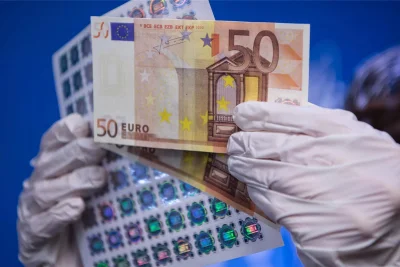10 Things We All Hate About Buy Fakes

The Rise of Fake Products: A Comprehensive Overview
In today's global market, counterfeit goods have become amazingly prevalent. From luxury fashion products to electronic gadgets, the fake product market has become a multibillion-dollar endeavor that affects consumers, organizations, and economies worldwide. This short article will explore the phenomenon of buying fakes, exploring the allure behind counterfeit items, their ramifications, and assistance for consumers looking for to navigate this complex landscape.
Comprehending the Allure of Fake Products
1. Cost-Effectiveness
One of the main factors customers choose fake products is the considerable expense savings. Authentic luxury items can carry hefty price, making them economically out of reach for lots of. Counterfeit variations typically cost a portion of the cost, providing an attractive alternative for those who prefer the visual of high-end brands without the accompanying expense.
2. Pattern Accessibility
Style trends frequently move quickly, triggering consumers to buy present styles. However, buying real designer products for each brand-new season can be financially unfeasible. Fake items permit individuals to remain on pattern without breaking the bank, making them particularly attracting younger consumers and those with limited budget plans.
3. Social Status
In numerous cultures, the ownership of luxury brand names is associated with social status and prestige. Counterfeit goods can offer a semblance of this status, allowing people to forecast a picture of wealth and success without the accompanying financial problem of genuine products.
The Implications of Buying Fakes
1. Economic Impact
While counterfeit items might offer a short-term monetary advantage to consumers, the wider economic implications are considerable. seriöse falschgeld anbieter undermines legitimate services, resulting in lost sales and harm to brand name track record. According to reports from the International Chamber of Commerce, the total financial value lost due to counterfeiting and piracy might reach over $4.2 trillion by 2022, impacting task markets and state incomes worldwide.
2. Safety and Quality Concerns
Counterfeit goods often do not have the quality and security guarantee of genuine products. Products like electronic devices, cosmetics, and pharmaceuticals might pose health risks, as they do not undergo basic safety screening or quality control measures. For circumstances, counterfeit cosmetics can consist of harmful chemicals, while fake electronics may posture fire risks due to inferior products.
3. Ethical Considerations
The trading of fake products raise ethical questions surrounding labor practices and environmental effects. Counterfeit goods are regularly produced in environments that exploit employees, using low salaries and bad working conditions. Additionally, the production of these products typically involves very little regard for ecological sustainability.
How to Spot Fake Products

For customers cautious of purchasing counterfeit products, finding out to determine fakes is essential. Here are numerous pointers to help prevent falling victim to counterfeiters:
1. Research study the Retailer
Confirm credibility: Seek merchants with recognized reputations and favorable client evaluations.
Examine for main partnerships: Authentic brands normally have actually designated sellers or authorized dealerships.
2. Analyze Prices
Too good to be true: If a deal seems excessively cheap compared to traditional market prices, proceed with care; it's most likely a fake.
Rate consistency: Compare rates across several websites to assess what a reasonable market value should be.
3. Inspect Product Details
Quality and workmanship: Genuine items normally have top quality finishes, sewing, and materials. Check logo designs and labels for precision.
Packaging: Authentic items frequently come in top quality packaging with security functions (e.g., holograms).
4. Seek Legal Channels
Licensing info: Reliable items frequently feature proof of credibility, such as serial numbers or credibility cards.
Return policies: Check for reasonable return policies, as trustworthy sellers ought to provide the alternative to return undesirable or faulty products.
Alternatives to Buying Fakes
For consumers who desire affordable options without running the risk of the mistakes of counterfeit goods, consider seeking out options:
1. Second-Hand and Vintage Items
Getting previously owned high-end items can supply access to genuine products at lower costs. Thrift stores, online marketplaces, and consignment shops often use designer items without the premium cost.
2. Affordable Brands
Numerous brands focus on creating top quality products that imitate luxury styles without the associated expenses. Researching these brands can yield stylish options without jeopardizing principles.
3. DIY Projects
For the creatively inclined, crafting or tailoring items can sometimes offer both a gratifying experience and an unique item that prevents the counterfeit issue.
Frequently Asked Questions About Buying Fakes
Q1: Are there legal consequences for buying counterfeit products?
Purchasing counterfeit items may lead to legal ramifications depending upon local laws. While consumers may not deal with extreme charges, knowingly buying fakes could result in seizure of goods and fines.
Q2: How can I report counterfeit goods?
Many countries have mechanisms to report counterfeit sellers. Consumers can report suspicious online listings or vendors to local law enforcement or organizations focusing on intellectual residential or commercial property security.
Q3: What should I do if I unwittingly bought a fake product?
If you find that your purchase is counterfeit, consider calling the seller for a return or refund. You can also report the seller to the platform utilized for the purchase.
Q4: Can counterfeit products ever be of good quality?
While some counterfeit items may appear well-crafted, they frequently lack the quality guarantee of legitimate brand names and can pose security risks. It is encouraged to prioritize purchasing authentic products for better durability and security.
Q5: Why do some people still buy fakes in spite of the risks?
In spite of the threats and ethical considerations, lots of people continue to buy counterfeit products due to their price and desire to take part in the high-end experience without significant monetary commitment.
Conclusion
The intricacy surrounding the usage of counterfeit items is diverse, incorporating financial, ethical, and safety factors. As the counterfeit market continues to grow, it is important for customers to remain informed and vigilant. By recognizing the implications of purchasing fakes and checking out ethical options, individuals can make educated choices that contribute favorably to the wider economy and society.
